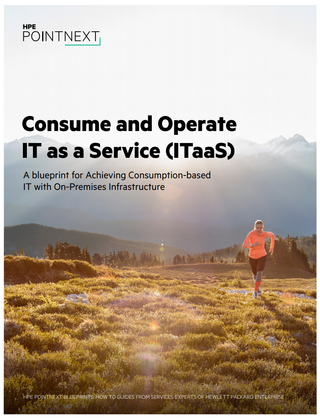Our 5-minute guide to ITaaS
What is ITaaS, what are the pros and cons, and how best can it be implemented?

Although renting may have its roots in commercialism, the principle has extended into our working lives. ‘As a Service’ delivery models have long been gaining market share, and IT as a service (ITaaS) bears no exception. While ITaaS isn’t a new concept, at present enterprises are increasingly adopting ITaaS models in order to support their digital transformation initiatives, in particular in efforts to facilitate hybrid IT environments.
But what exactly is ITaaS, and how can you best take advantage of the benefits it has to offer? Here, we run through the pros and cons of the technology trend capable of keeping your business ahead.
What is it?
Whereas historically businesses purchased their technology outright, the present generation of IT professionals is moving towards rent or subscription-based ITaaS models when selecting hardware and infrastructure for their business. An ITaaS model treats IT as a commodity, where the IT department is run as a business and can be optimised according to business needs.
Simply put, enterprises that leverage ITaaS are accessing an end-to-end IT solution that provisions the exact hardware, software and support required to enable the business to operate. The enterprise is free to source the best technology at the best price and to follow the construction process from the first step to the final outcome.
Typically a combination of IT is selected, creating a hybrid environment comprised of on-premise hardware and cloud computing, allowing for a more flexible approach.
Diving into the detail, ITaaS facilitates the move towards hybrid IT environments by massively simplifying data centres. Fewer hardware components ensure that complexity is removed, allowing for greater storage capacity, stronger network connectivity, and affluent compute capabilities. Further, this modern data centre is placed under less strain as workloads shift to the cloud.
How the enterprise can embrace hybrid cloud Our 5-minute guide to PC as a service Why enterprises are moving back to on-premise data centres What is a managed IT service?
However, while data centre complexity is reduced, hybrid environments are more difficult to manage. In-house IT departments must sow together each element, integrating on-premise hardware with software, and so facilitating the construction of the environment required by the enterprise.
Get the ITPro. daily newsletter
Receive our latest news, industry updates, featured resources and more. Sign up today to receive our FREE report on AI cyber crime & security - newly updated for 2024.
Here, ITaaS service providers can step in to manage infrastructure complexity from the first step to the last and through the purchasing, deployment and monitoring stages. In-house IT teams no longer have to support equipment, instead purchasing what they need from the ITaaS provider and so handing back control to the enterprise.
Although ITaaS offers a wide breadth of coverage across all IT sectors including cloud computing, it’s the only ‘as a Service’ model that isn’t cloud-based. Instead, it attempts to shift IT operations towards a managed services model on a pay-as-you-go basis.
Pro and cons
Although proponents of ITaaS list to a range of benefits that can be realised through implementation, transitioning to an ‘as a Service’ model is no mean feat. The move involves external partners and internal departments, each with its own moving parts, ideas, and methods, working collaboratively towards a common goal. A detailed roadmap is therefore required for the journey to begin.

Your guide to IT as a Service (ITaaS)
A blueprint for achieving consumption-based IT with on-premises infrastructure
ITaaS is invariably a pay-as-you-use model which should eliminate overspend on estimated requirements. Granted, there are service fees to be inducted into cost-calculations, yet the impact of recurring costs are offset by savings produced over the long run. Working with an ITaaS provider ensures equipment is monitored and maintained, allowing the enterprise to conduct further cost-reduction initiatives in-house and to resource-strip where necessary; IT departments can be reduced or staff can be repurposed to focus on other business-expanding initiatives.
Similar to other ‘as a Service’ models, the scalability ITaaS provides equips the enterprise with the flexibility required to respond to evolving markets. The enterprise pays for only the IT capacity that’s needed in its on-premise data centres, and can simply adapt requirements when demand fluctuates.
The simplicity of the model not only benefits the wider business by making it agile but also supports the in-house IT department. Time spent resolving operational issues, something very significant when considering the newly complex infrastructure that comes with hybrid environments, can be shifted to the ITaaS provider, freeing personnel to focus on other tasks. Ongoing dialogue can determine any issues, for instance, where there are capacity concerns, and workloads can then be shifted to suit.
As on-premise data centres continue to be combined with the ever-evolving cloud to make hybrid IT infrastructure, ITaaS’ upward trajectory is only set to continue. The earlier enterprises plot their roadmap, the sooner they can enjoy a successful transition.




